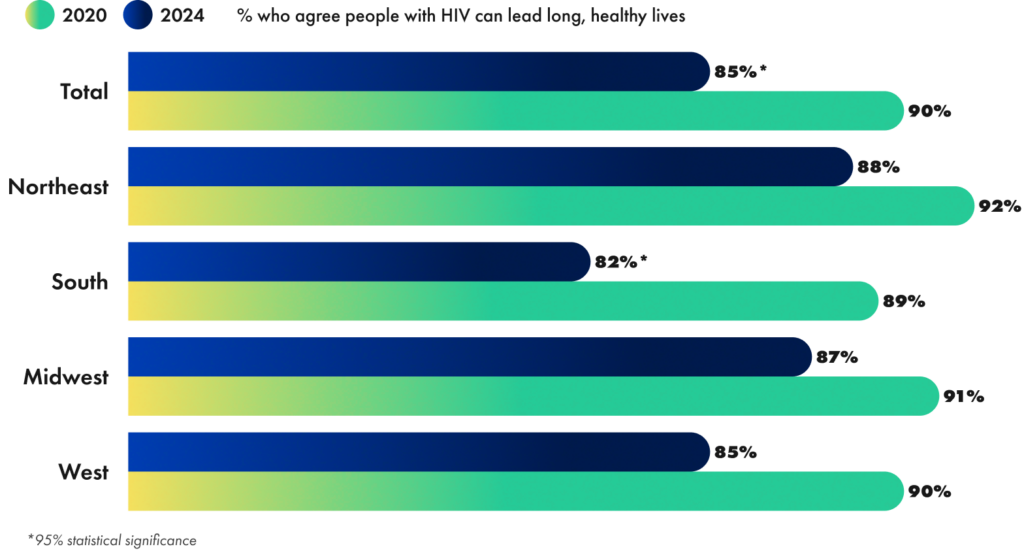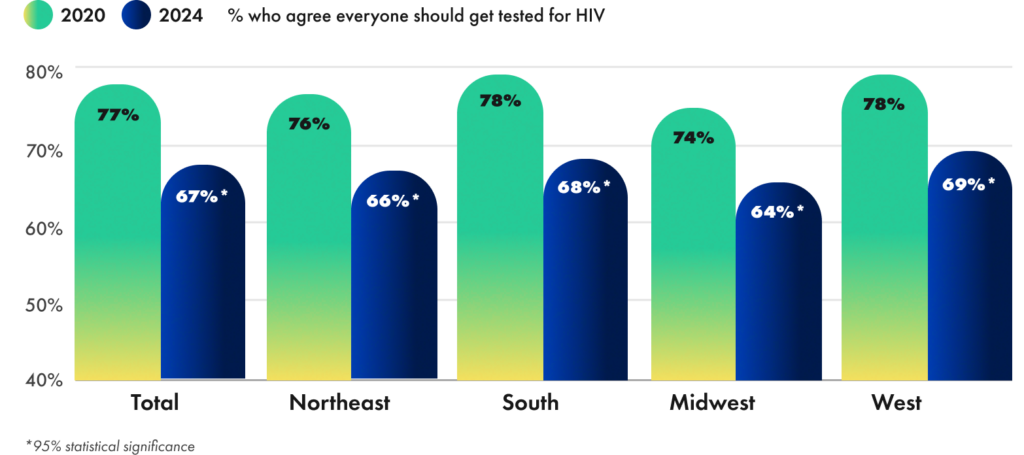The Power of an HIV Story: Pedro Zamora and The Real World
This year marks the 30th anniversary of the airing of Real World San Francisco on MTV, which featured Pedro Zamora, who was the first reality TV personality to publicly share their HIV status. By the time the show debuted, he had already told his story to many people nationwide as a public speaker in small groups. Zamora understood the power of story and of mass media to influence public opinion.
“I can get up and tell my story about not feeling well or having fun, about getting sick or going out dancing, but people can’t really see it,” Zamora said in an interview3 with POZ in 1994. “I thought being on this series would be a great way to show how a young person actually deals with HIV and AIDS.”
When Zamora died only hours after the Real World season finale aired in November 1994, he was 1 of just under 50,000 people living with HIV who passed that year4. For those Americans who knew no one who was living openly with AIDS, Zamora was the person they knew. They had watched him, in their living rooms, parasail in Mexico and have a commitment ceremony — the first between a same-sex couple in TV history — to his partner, Sean Sasser.
Not only did Real World viewers get a sense of Zamora’s life with HIV, they also saw firsthand the consequences of HIV stigma and misinformation. While living in the house, Zamora was able to educate the cast about AIDS, even becoming close with one cast member, Rachel Campos- Duffy, who initially expressed hesitation to live with someone who was HIV positive. “He was very well-aware of what he wanted to accomplish on the show,” Campos-Duffy later told BuzzFeed. “He also understood his power on the show in terms of how important this story was going to be, how groundbreaking it was.5”
Zamora’s story stood as a counter testament to the usual depictions of those living with HIV and stands, once again, three decades later, as a model for the power of a well-told story to change public sentiment and deliver important information. Data from GLAAD indicates that long-held myths and misgivings about people living with HIV are on the rise again: across the board, fewer Americans today believe that people living with HIV can lead long, healthy lives with proper access to treatment, compared to 2020. The only region of the country that saw significant declines in this belief came among respondents in the Southern United States. Similarly, GLAAD recorded a steep decline in all regions of the U.S. in the belief that everyone should get tested for HIV, despite the CDC recommending that all people between the ages of 13 and 64 know their status.
Zamora’s unscripted presentation of a life with HIV preceded many fictional accounts that would follow. Since 1994, many series have had storylines about people living with the virus, including How to Get Away with Murder, Pose and Looking. Despite the multiple TV shows in the past few decades that have pulled back the curtain on life with HIV, in the year 2023-24 television season, only one character on a scripted broadcast, cable or streaming show in the United States was HIV positive: Tim, portrayed by Jonathan Bailey, one-half of the series’ main couple. Given that it’s a limited series, Fellow Travelers will not be returning, potentially leading to a television landscape that will not feature any people living with HIV.
In a country with 1.2 million people living with HIV, a media landscape that does not reflect what it means to live with the virus is a disservice to a large number of Americans. As data captured by GLAAD shows, exposure to depictions of people living with HIV (PLWHIV) as real, 3-D human beings makes people more welcoming to PLWHIV in their communities.
People Living with HIV Can and Do Lead Long, Healthy Lives
Yet, significantly fewer Americans agree with this statement in 2024, compared to 2020. We need to see more stories of people living with HIV thriving, across all forms of media.

The CDC Recommends that Everyone Between the Ages of 13 and 64 Get Tested for HIV at Least Once













